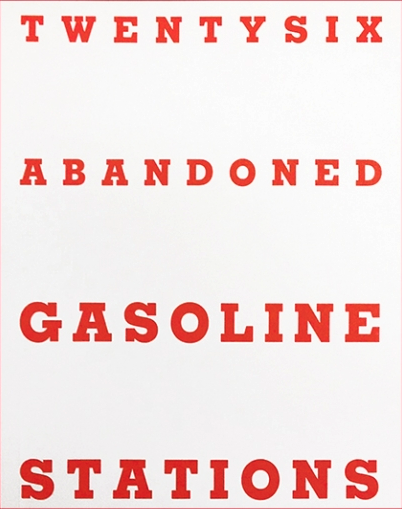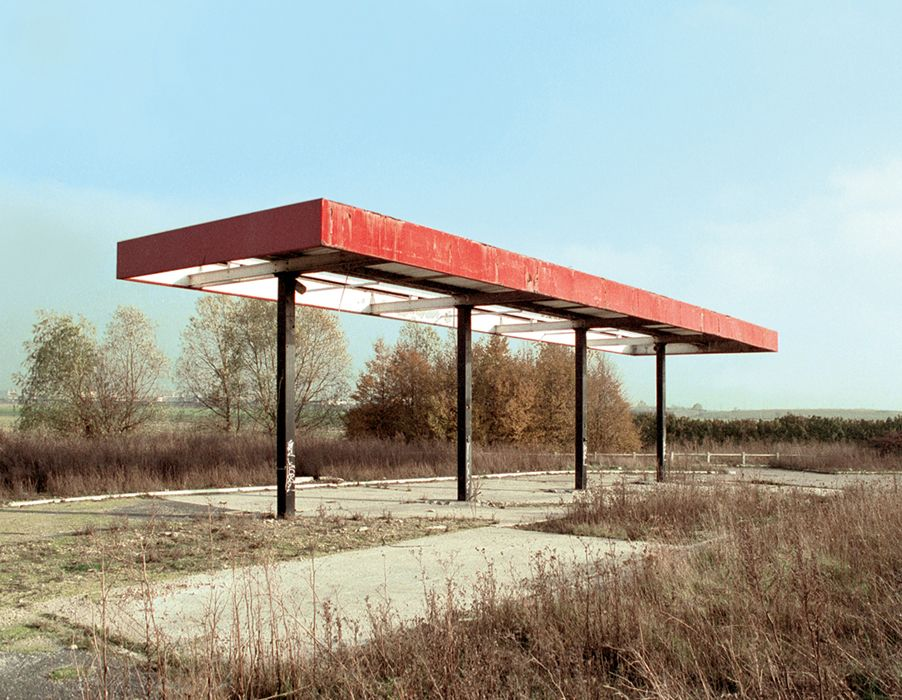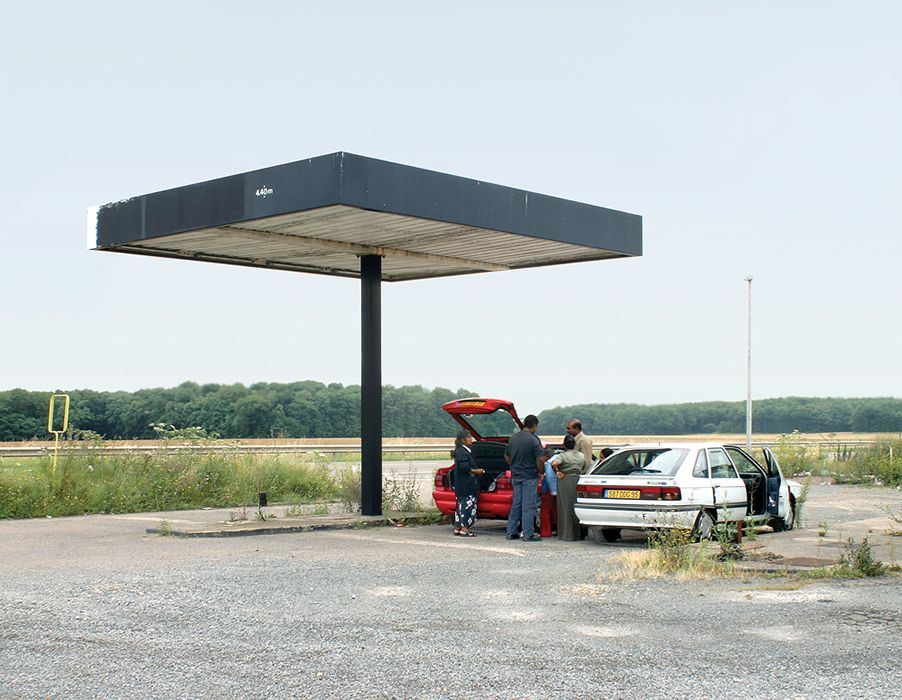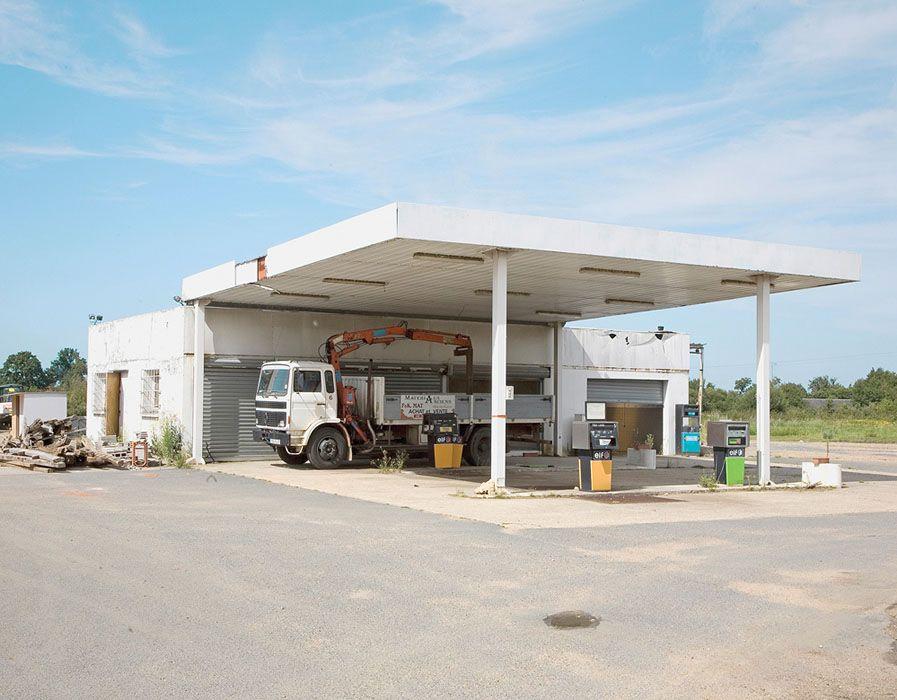What is Typology:
Typology is a single photograph or more commonly a body of photographic work, that shares a high level of consistency that is mostly based on the environment, subjects and photographic process. It was created by Bernd and Hilla Becher in Germany, 1959. When they started taking photos of buildings that had gone to ruin and had been abandoned.
Examples of Typology:


As you can see, they appear to have a deadpan style, with the camera facing the subject head on in black and white. With nothing else in the frame, it’s just the building. Sometimes other sides of the building were also taken to show more perspectives.
Bernd and Hilla Becher:
Bernd and Hilla Becher were a couple who formed a duo in photography. And also, as said earlier, were the ones who started Typology:
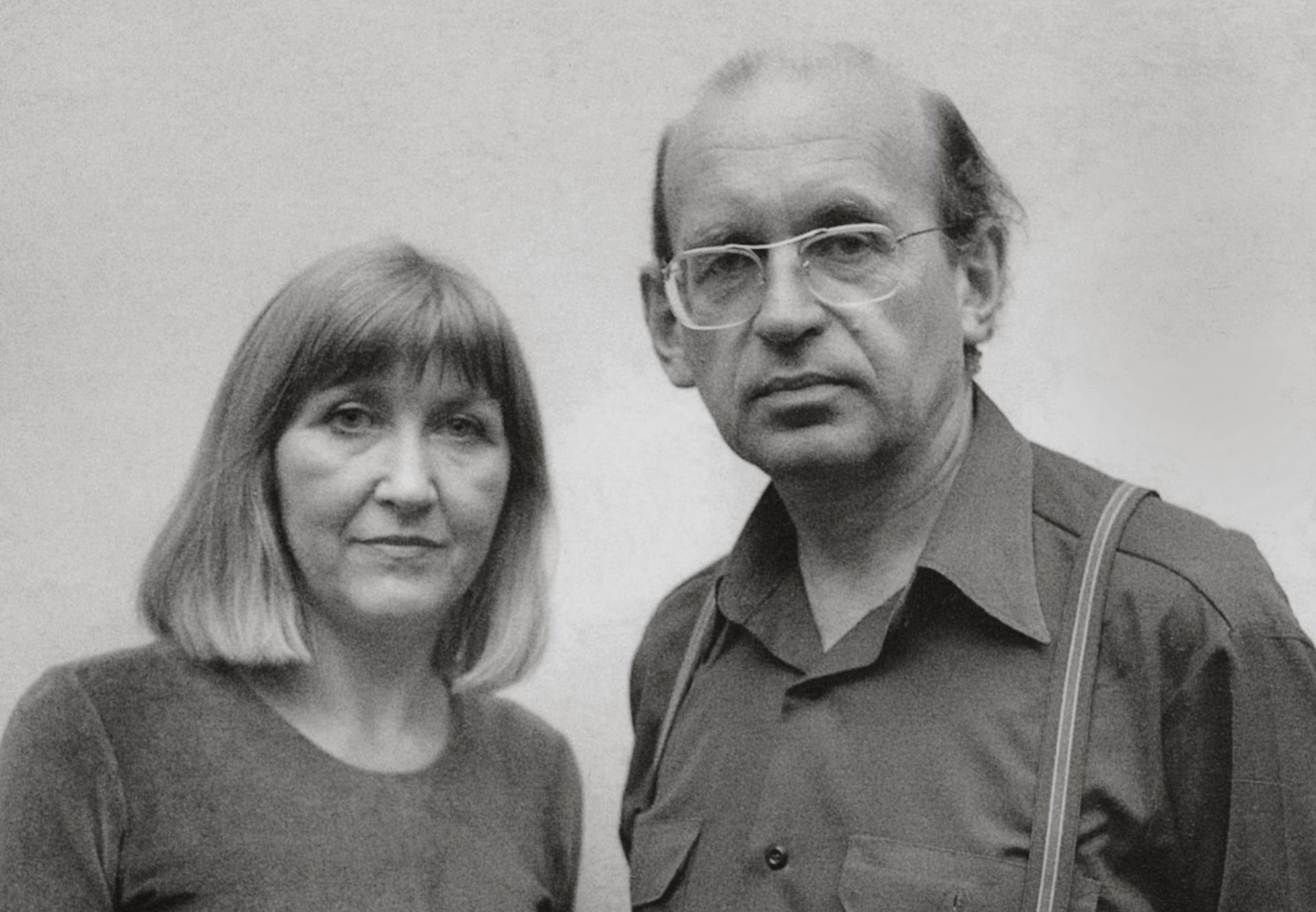
They described their work to be “buildings where anonymity is accepted to be the style” and their motive was to “capture a record of a landscape they saw changing and disappearing before their eyes”.
Their work inspired other photographers and was passed down to photographers who were from the next generation. Photographers like Ed Ruscha, Thomas Ruff and Gillian Wearing were some of these photographers who went out and took photos in relation to the Becher’s work.
Ed Ruscha:
“Every Building on the Sunset Strip”
Ed Ruscha was famous for his paintings and prints but was also well known for his work on Typology in photography. He used the deadpan style very well and wanted to capture the same theme the Bechers did. He is well known for his album named “Every Building on the Sunset Strip” which he made in Hollywood, 1966:

This 25ft folded album contained photographic views he took in the 1 and a half mile road stretch of sunset. Every two pages would capture both sides of the road to create a sort of panographic type of view.
“Twenty-six Gasoline Stations”
Ed Ruscha made his first book in 1963 and called it “Twenty-six Gasoline Stations”. As implied by the title, it contained 26 pictures of gas stations. The book is also considered to be the first modern artists book ever made and it became a precursor to modern artist book culture:
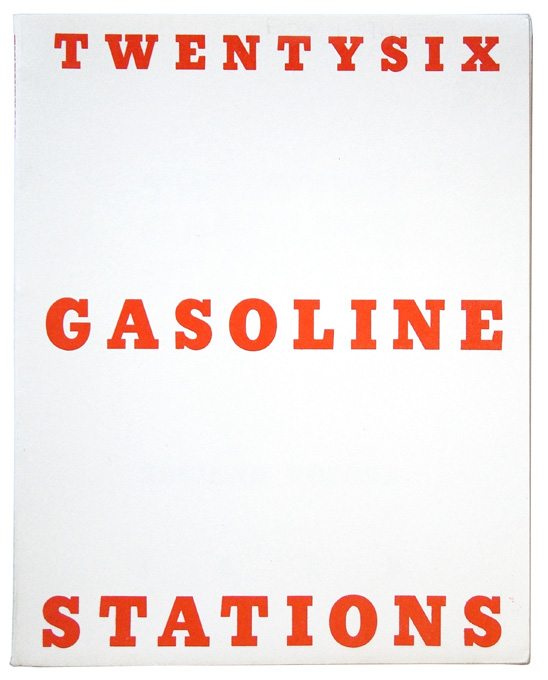
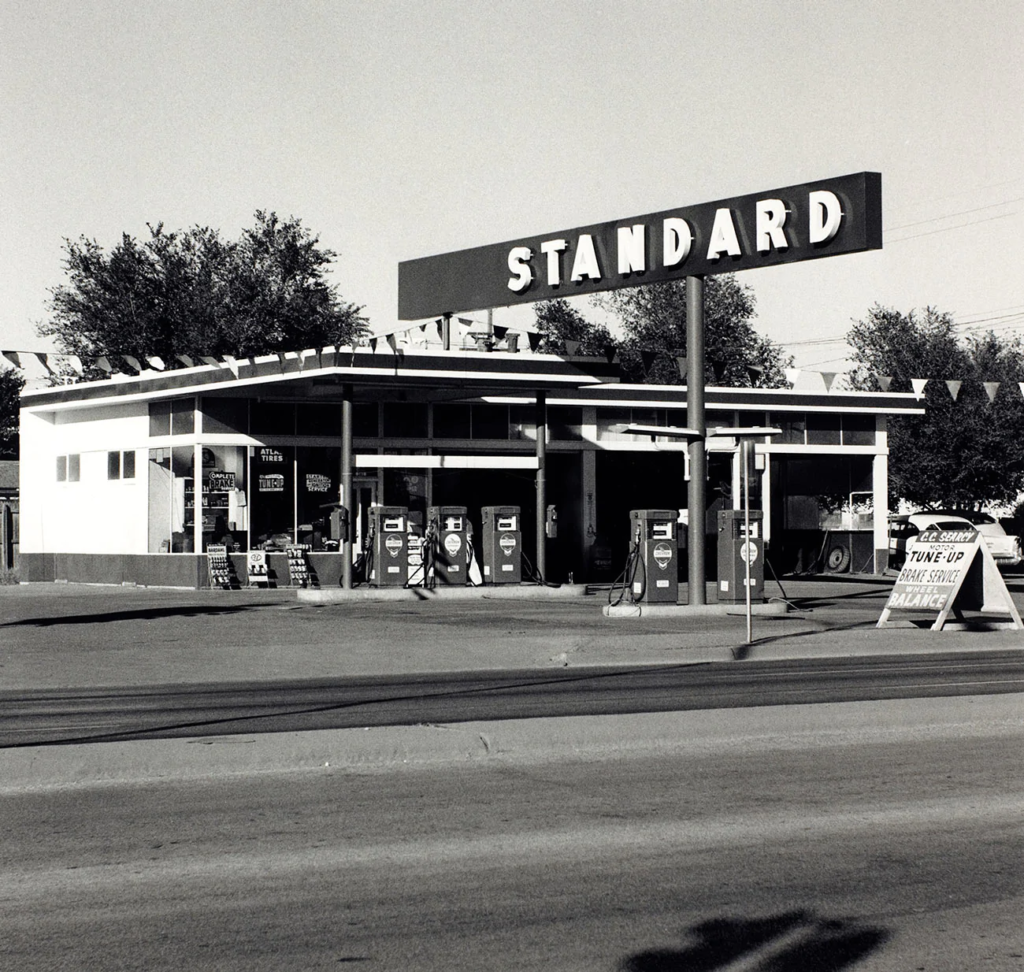
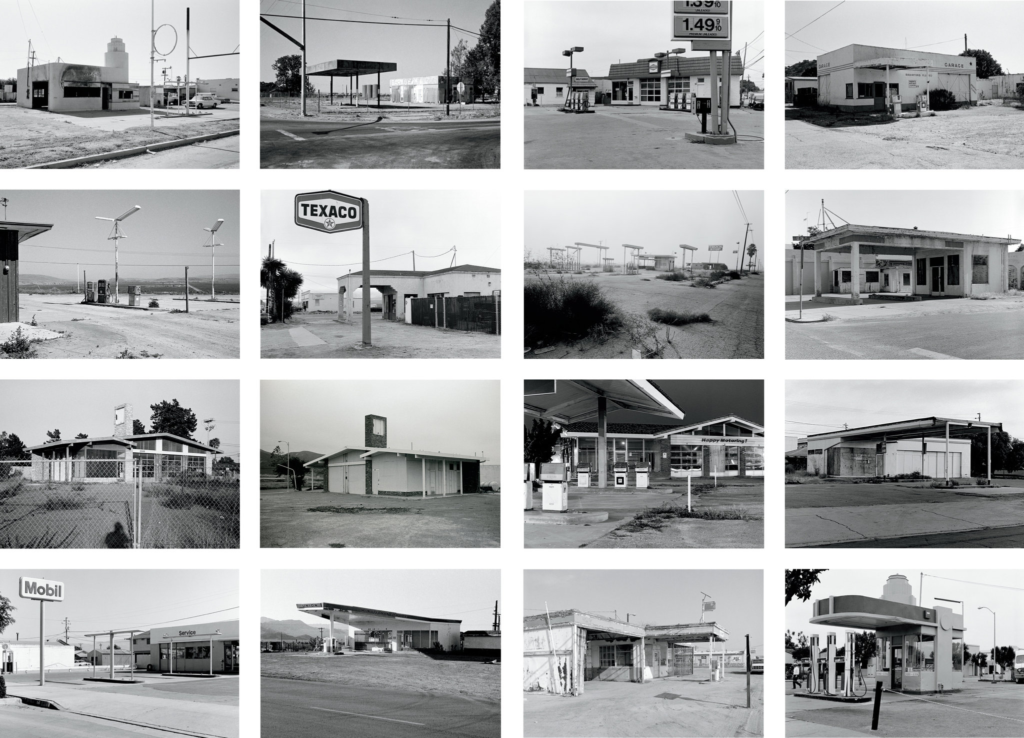
As you can see, they also fit the deadpan style with no particularly interesting features. Ed Ruscha himself said:
“I had this vision that I was being a great reporter when I did the gas stations. I drove back to Oklahoma all the time, five or six times a year. And I felt there was so much wasteland between L.A. and Oklahoma City that somebody had to bring in the news to the city…I think it’s one of the best ways of just laying down facts of what is out there. I didn’t want to be allegorical or mystical or anything like that.”
So his motive was to intentionally make the photos boring to show people that the area had exactly that level of excitement in the actual place at that time.
“Twenty-six Abandoned Gasoline Stations”
A photographer named Jeffrey Brouws made a replica of Ed Ruscha’s work in 2013, taking 26 photos of gas stations but instead being abandoned this time. the idea was to show how times have changed and that many gas stations were beginning to be abandoned, whether this was due to newer technology being made or rises in cost in order to maintain businesses wasn’t confirmed. But it also captures the same deadpan approach that Ruscha also had:
